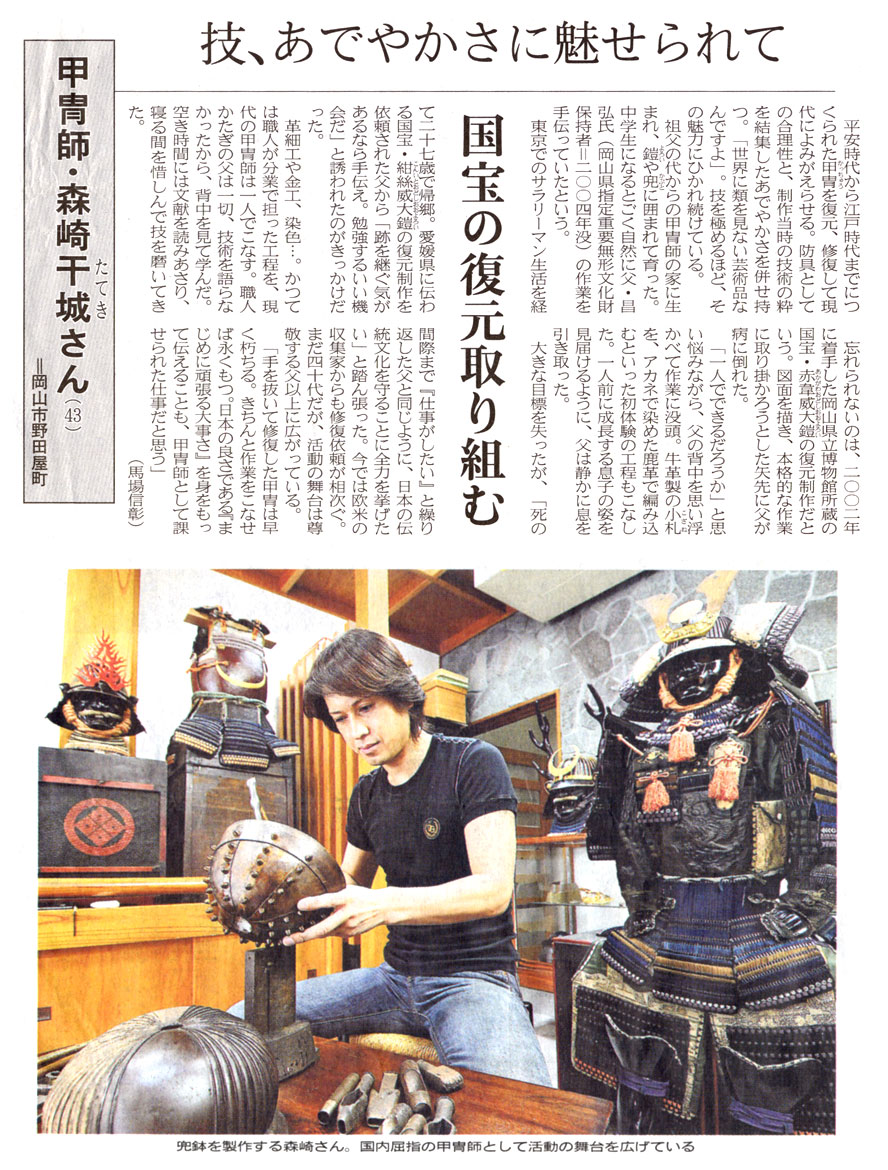Fascinated by the level of perfection and the beauty.
The restoraPutting efforts on restoration of a National treasure.
The restoration of Japanese
armor dating from the Heian period to the Edo period is an attempt to return
armor worn by time to its original form. The level of perfection, precision and
beauty are reflected in the craftsmanship of armor. They represent an unprecedented
level of art. As Tateki Morisaki develops his craft, he continues to become more
and more enthralled by what he learns.
Mr Morisaki was born into the house of a Japanese armorer. The Morisaki Family
has been restoring armor for three generations. He has spent his whole life surrounded
by samurai armor and began helping his father, the late Masahiro Morisaki, who
was designated a living national treasure, when he was a child.
Restoring japanese armor requires many varied and skilled techniques such
as lacquering, braiding, metal chasing and leather dyeing. Making a full set
of Katchu used to require the work of a group of highly skilled craftsmen. Today
a single armorer handles every aspect of the restoration process, and makes original
suits of armor as well. In the time-honored manner of traditional Japanese
master craftsmen, his father did not teach him any skills. Mr Morisaki immersed
himself in the study and research of armor day and night painstakingly until
he was satisfied that a proper restoration could be undertaken.
The most memorable work he has ever done was the restoration of Akagawa Odoshi
Oyoroi in 2002. This set of armor is owned by the Okayama Prefectural Museum
and has been designated Japanese national treasure. As his father before him
he has put all his efforts into maintaining these unique Japanese works of art.
He currently has a lot of restoration requests from collectors overseas, and
his business has expanded to a point far greater than it was in his father’s
time.
“If your work is mediocre, it will not hold up well over time, but if you do things in the right way to the best of your ability, the quality of your work will last for generations.
The traditional Japanese spirit of devoted craftsmanship needs to be passed on to others.
Sanyo Shinbun(Newspaper) 07/19/2008
